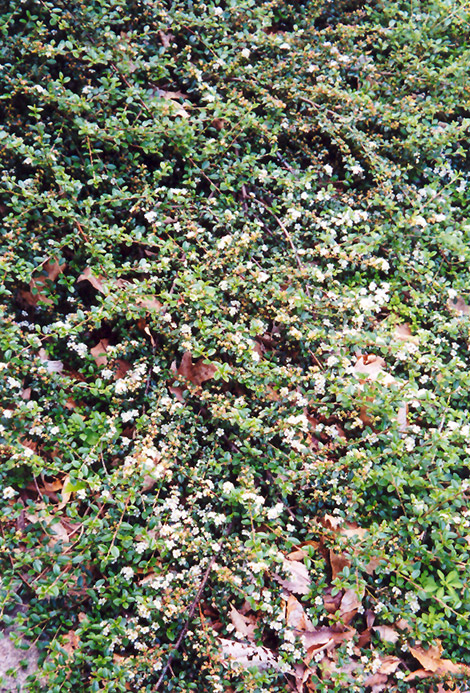Spreading Cotoneaster
Cotoneaster divaricatus
Height: 6 feet
Spread: 7 feet
Sunlight:
![]()
![]()
Hardiness Zone: 5b
Description:
A general purpose landscape shrub for massing, garden use or as a tall groundcover; valued for its arching branches and stunning fall performance with fiery colors and showy bright red fruit
Ornamental Features
Spreading Cotoneaster is primarily valued in the landscape or garden for its cascading habit of growth. It features tiny clusters of pink flowers along the branches in late spring. It has dark green deciduous foliage. The small glossy pointy leaves turn an outstanding brick red in the fall.
Landscape Attributes
Spreading Cotoneaster is a multi-stemmed deciduous shrub with a shapely form and gracefully arching branches. It lends an extremely fine and delicate texture to the landscape composition which can make it a great accent feature on this basis alone.
This is a relatively low maintenance shrub, and should not require much pruning, except when necessary, such as to remove dieback. It has no significant negative characteristics.
Spreading Cotoneaster is recommended for the following landscape applications;
- Mass Planting
- Hedges/Screening
- General Garden Use
- Groundcover
Planting & Growing
Spreading Cotoneaster will grow to be about 6 feet tall at maturity, with a spread of 7 feet. It tends to fill out right to the ground and therefore doesn't necessarily require facer plants in front, and is suitable for planting under power lines. It grows at a medium rate, and under ideal conditions can be expected to live for approximately 30 years.
This shrub does best in full sun to partial shade. It is very adaptable to both dry and moist locations, and should do just fine under average home landscape conditions. It is not particular as to soil type or pH, and is able to handle environmental salt. It is highly tolerant of urban pollution and will even thrive in inner city environments. This species is not originally from North America.

